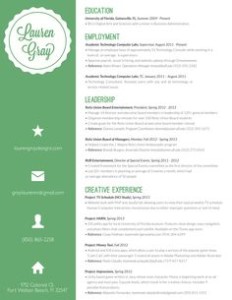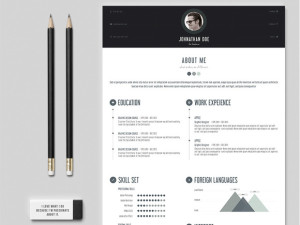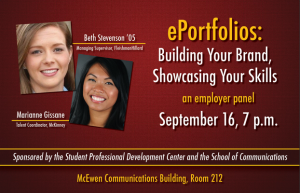Emily Hill ’18, guest blogger
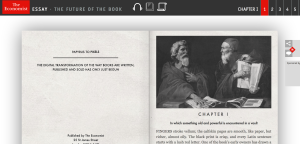 We have been conducting several class discussions in ENG 311 Publishing about how eBooks are affecting the print industry. In our most recent assignment, we were asked to read I Economist essay, “From Papyrus to Pixels” which was as an eBook. I couldn’t help but recollect a different media platform transformation. Advancements in technology have completely taken over original ways of accessing movies or television. Obviously there are still televisions with live segments of shows, but there are now programs On Demand that you can access at your convenience. Technology creates convenience, which inevitably takes over tradition.
We have been conducting several class discussions in ENG 311 Publishing about how eBooks are affecting the print industry. In our most recent assignment, we were asked to read I Economist essay, “From Papyrus to Pixels” which was as an eBook. I couldn’t help but recollect a different media platform transformation. Advancements in technology have completely taken over original ways of accessing movies or television. Obviously there are still televisions with live segments of shows, but there are now programs On Demand that you can access at your convenience. Technology creates convenience, which inevitably takes over tradition.
I’m sure most of you remember the time that Blockbuster used to be such a popular company. Kids and adults would make the drive out to the nearest store and rent a few of their favorite DVDs for the weekend. It was an experience to go with your family, significant other, or friend and spend so much time sifting through all the different genres and titles. Similar to a library of books, these DVD rental stores were created an element of surprise coming across movies you had never seen. You didn’t have unlimited options and would have to settle for the two best discs you could find.
Technology has now invented ways to browse these rental DVDs from the comfort of your home. You can now watch over hundreds of movies with the click of one button. Although Amazon Prime, Apple TV, and Netflix all make our lives easier, it completely transformed our movie watching experience. No one ever expected or believed that this would change, similar to how everyone believes that eBooks will never fully overtake print books. However, it is important to consider that there are instances where we see traditional experiences getting overtaken by technological advances.
This idea is similar to the concept we noticed in the different media platforms used for The Economist essay eBook. It had three different formats, the eBook version, scroll version, and audio version. All of these represented multiple ways in which information could be interpreted and designed. A lot of these versions came from the writer’s main priority and goal: producing user-oriented content. Their main purpose is to get as many readers as possible. They adjust and adapt their content across these different platforms for that overarching goal. The image below is an example of the scrolling version that offers more interactive features for the audience and is easier to read.
 This parallels how Blockbuster went out of business because owners of the rental store had to adapt to the technological advances that allowed for online movie rental. No one was going to go to a store when they could have a plethora of options in the comfort of their own home. Adaptation is a key skill that a writer must attain. Relating to our own eBook creation we constantly had to adapt our writing, design styles, and interactive features to fit our audience’s needs. I remember designing the pull out quote templates with the maroon and gold colors since we are targeting Elon’s student body. The Economist Essay talks a lot about the idea of how print books are never going to go extinct, but the idea of movie rental stores going out of business because of the online advancements makes me question how likely it really could be for eBooks to replace print.
This parallels how Blockbuster went out of business because owners of the rental store had to adapt to the technological advances that allowed for online movie rental. No one was going to go to a store when they could have a plethora of options in the comfort of their own home. Adaptation is a key skill that a writer must attain. Relating to our own eBook creation we constantly had to adapt our writing, design styles, and interactive features to fit our audience’s needs. I remember designing the pull out quote templates with the maroon and gold colors since we are targeting Elon’s student body. The Economist Essay talks a lot about the idea of how print books are never going to go extinct, but the idea of movie rental stores going out of business because of the online advancements makes me question how likely it really could be for eBooks to replace print.

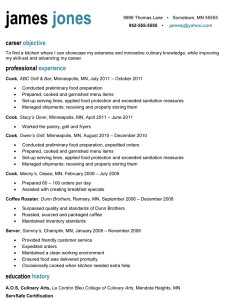 Do a quick Google Image search for “professional résumés.” For the most part, you will find text-heavy résumés with little to no color. You will find résumés with bolded words that draw attention to sections or past experiences, and bulleted lists will outline skills and duties from each experience. Some play with basic line rules to divide sections, while others have small pops of color to show an eye for design, like the one to the right.
Do a quick Google Image search for “professional résumés.” For the most part, you will find text-heavy résumés with little to no color. You will find résumés with bolded words that draw attention to sections or past experiences, and bulleted lists will outline skills and duties from each experience. Some play with basic line rules to divide sections, while others have small pops of color to show an eye for design, like the one to the right.